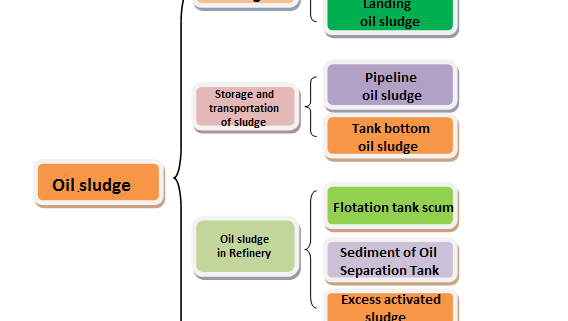Oil sludge is generally considered to be a mixture. The main components are: crude oil or refined oil, other organic components, mud, and water. It is a concomitant product produced during oil exploitation, oil wastewater treatment, petroleum refining, and petroleum production and processing. According to different sources of oil sludge, it can be divided into the following categories:
(1) Oilfield sludge
Oilfield sludge is mainly produced in the process of oil exploitation. This type of oil sludge mainly has two forms: oil sludge treatment and oil sludge from oil sludge treatment. The treatment of oil production and the treatment of oil recovery sewage will produce a mixture of oil sludge. The slag phase components in this oil sludge are generally derived from rock fines under the bottom layer, and the water content is generally high; Refers to the oil sludge formed by the mixing of instrument tools during the mining process or the occurrence of crude oil discharge and some accidental leakage and infiltration into the oil field soil. Such oil sludge generally has a small oil content and a large slag content. Different oil fields show different differences.
(2) Storage and transportation of oil sludge
As the name implies, the storage and transportation of oil sludge is generated during the later collection and storage of petroleum. The transportation of oil mainly depends on means such as oil pipelines, oil tankers and oil tankers, and then stored in the corresponding tank equipment. After long-term use accumulation, some heavy oil components in petroleum will be deposited on the bottom of the conveying device and storage device due to the high viscosity and high density. These heavy components and devices deposited at the bottom Some of the debris and particles form a storage sludge. The oil content of this type of sludge is generally high, and most of them are heavy component oils, and it contains a large amount of metal elements carried by materials of storage and transportation equipment, which is difficult to recycle.
(3) Oil sludge in refinery and chemical plant
In many processes of refinery plants, water resources are inevitably needed, and the sewage produced in the production process is complex in nature. The oil sludge produced in the process of treating sewage in refineries can be roughly divided into three categories: flotation cells. Scum, grease trap bottom mud and residual activated sludge. The addition of a large amount of chemical agents to the oily wastewater during the treatment process complicates the composition and nature of the oil sludge in the refinery. Generally, the floating oil sludge scum mud and the grease trap bottom mud are mixed and stored, and the activated sludge is stored separately. The main reason is that the first two types of oil sludge have high oil content and small slag content, and the latter sludge generally has low oil content. .
(4) Oil sludge produced during the process of synthesizing petrochemical products
This kind of oil sludge is produced in the petroleum petrochemical synthesis process, mainly from the oil residue or waste raw materials produced in the process of further processing crude oil or refined oil to produce synthetic products, such as oil sludge produced during the production of paint. Such oil sludges have a high oil content, most of which are heavy components, and a large amount of other organic substances are added during the production process, the components are complex, the viscosity is large, and it is difficult to handle.
The oil sludge pyrolysis gasification device can process oil sludge from different sources, and the pyrolysis gasification device can separate the oil sludge into three phases and extract the refined oil in the sludge. This technology not only solves the pollution of the environment, but also realizes considerable economic value and has broad application prospects.



